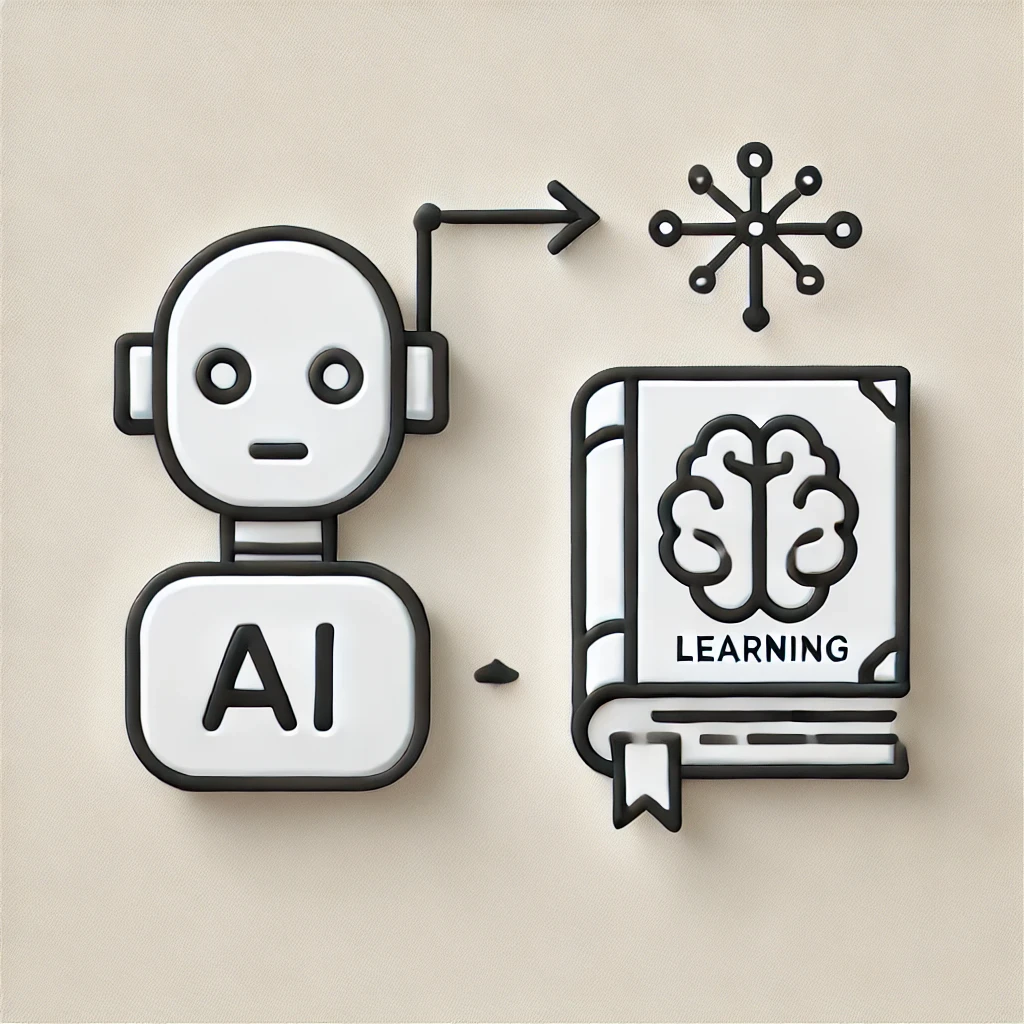Sep 11, 2024
Emergent Abilities in Large Language Models: Unlocking AI Superpowers

Robert

Ever wondered if AI models could suddenly develop superpowers as they grow bigger? That’s essentially what the paper “Emergent Abilities of Large Language Models” dives into. It explores the fascinating concept of "emergent abilities" in large language models (LLMs)—capabilities that seem to appear out of nowhere as these models scale up.
What's the Big Deal?
The researchers investigate a mind-bending idea: as language models become larger, they don’t just improve on existing tasks—they can suddenly perform entirely new tasks that were previously impossible. Imagine building a larger calculator, and it suddenly starts writing poetry.
This isn’t just a theoretical curiosity. Understanding these emergent abilities is essential for predicting what future AI systems might be capable of. It’s the difference between "our AI will get a bit better at translation" and "our AI might spontaneously develop the ability to reason about ethics."
How Did They Figure This Out?
The researchers took a two-pronged approach to explore these emergent abilities:
1. Quantitative Analysis
They plotted performance curves against model size to look for sudden jumps in ability—signs of new capabilities emerging as models grew larger.
2. Qualitative Analysis
Beyond the numbers, the researchers manually analyzed what the models were outputting, looking for new kinds of behavior that hadn’t been seen in smaller models.
They used a variety of benchmarks, but the centerpiece was the "Beyond the Imitation Game" (BIG-bench) benchmark. This collection of tasks tests for complex reasoning, creativity, ethical judgment, and nuanced understanding—the kind of cognitive abilities we typically associate with humans.
What Did They Find?
The results were pretty stunning. As the models grew, they began excelling at tasks within the BIG-bench benchmark that smaller models couldn’t even begin to handle. This included things like complex reasoning and making nuanced ethical judgments.
The Key Insight: It’s Not Gradual
These new abilities didn’t develop gradually. Instead, there was a critical threshold—a specific model size beyond which these capabilities suddenly appeared. It’s less like a smooth growth curve and more like flipping a switch.
Why Does This Matter?
1. Unpredictability
One of the most important takeaways is that we can’t simply extrapolate from smaller models to predict the behavior of larger ones. This unpredictability makes planning for future AI capabilities much more complicated.
2. Potential for Breakthroughs
The fact that scaling up models leads to entirely new abilities suggests we could be on the verge of major AI breakthroughs—just by making models bigger.
3. Ethical Considerations
If models can suddenly develop abilities like ethical reasoning, we need to consider the implications. What kind of impact could these emergent abilities have on society, and how do we ensure responsible development?
But Let’s Pump the Brakes
While this paper is groundbreaking, it’s not without its limitations:
1. Cost Considerations
Scaling these models requires massive computational resources, something the paper doesn’t deeply address. Are these emergent abilities worth the environmental impact and resource investment?
2. Diminishing Returns
There’s little discussion on whether we’ll eventually hit a performance plateau. Will scaling always yield new abilities, or are we bound to hit a wall at some point?
3. Architecture Fixation
The study focuses heavily on scaling existing architectures. But could we achieve similar or better results with innovative architectural changes instead of just making everything bigger?
The Bottom Line
This paper pushes the boundaries of our understanding of AI, showing that larger models don’t just get better—they can develop entirely new abilities. As we continue to scale up, we may be in for some big surprises.
However, it also raises crucial questions. How do we balance the potential for groundbreaking capabilities against the enormous computational costs? And are we focusing too much on making models bigger instead of making them smarter?
One thing is clear: the field of AI is anything but predictable. As we push these models to new scales, we’re not just improving existing capabilities—we’re potentially unlocking new realms of intelligence. Buckle up, because the ride is just getting started.
Sep 11, 2024
Emergent Abilities in Large Language Models: Unlocking AI Superpowers

Robert

Ever wondered if AI models could suddenly develop superpowers as they grow bigger? That’s essentially what the paper “Emergent Abilities of Large Language Models” dives into. It explores the fascinating concept of "emergent abilities" in large language models (LLMs)—capabilities that seem to appear out of nowhere as these models scale up.
What's the Big Deal?
The researchers investigate a mind-bending idea: as language models become larger, they don’t just improve on existing tasks—they can suddenly perform entirely new tasks that were previously impossible. Imagine building a larger calculator, and it suddenly starts writing poetry.
This isn’t just a theoretical curiosity. Understanding these emergent abilities is essential for predicting what future AI systems might be capable of. It’s the difference between "our AI will get a bit better at translation" and "our AI might spontaneously develop the ability to reason about ethics."
How Did They Figure This Out?
The researchers took a two-pronged approach to explore these emergent abilities:
1. Quantitative Analysis
They plotted performance curves against model size to look for sudden jumps in ability—signs of new capabilities emerging as models grew larger.
2. Qualitative Analysis
Beyond the numbers, the researchers manually analyzed what the models were outputting, looking for new kinds of behavior that hadn’t been seen in smaller models.
They used a variety of benchmarks, but the centerpiece was the "Beyond the Imitation Game" (BIG-bench) benchmark. This collection of tasks tests for complex reasoning, creativity, ethical judgment, and nuanced understanding—the kind of cognitive abilities we typically associate with humans.
What Did They Find?
The results were pretty stunning. As the models grew, they began excelling at tasks within the BIG-bench benchmark that smaller models couldn’t even begin to handle. This included things like complex reasoning and making nuanced ethical judgments.
The Key Insight: It’s Not Gradual
These new abilities didn’t develop gradually. Instead, there was a critical threshold—a specific model size beyond which these capabilities suddenly appeared. It’s less like a smooth growth curve and more like flipping a switch.
Why Does This Matter?
1. Unpredictability
One of the most important takeaways is that we can’t simply extrapolate from smaller models to predict the behavior of larger ones. This unpredictability makes planning for future AI capabilities much more complicated.
2. Potential for Breakthroughs
The fact that scaling up models leads to entirely new abilities suggests we could be on the verge of major AI breakthroughs—just by making models bigger.
3. Ethical Considerations
If models can suddenly develop abilities like ethical reasoning, we need to consider the implications. What kind of impact could these emergent abilities have on society, and how do we ensure responsible development?
But Let’s Pump the Brakes
While this paper is groundbreaking, it’s not without its limitations:
1. Cost Considerations
Scaling these models requires massive computational resources, something the paper doesn’t deeply address. Are these emergent abilities worth the environmental impact and resource investment?
2. Diminishing Returns
There’s little discussion on whether we’ll eventually hit a performance plateau. Will scaling always yield new abilities, or are we bound to hit a wall at some point?
3. Architecture Fixation
The study focuses heavily on scaling existing architectures. But could we achieve similar or better results with innovative architectural changes instead of just making everything bigger?
The Bottom Line
This paper pushes the boundaries of our understanding of AI, showing that larger models don’t just get better—they can develop entirely new abilities. As we continue to scale up, we may be in for some big surprises.
However, it also raises crucial questions. How do we balance the potential for groundbreaking capabilities against the enormous computational costs? And are we focusing too much on making models bigger instead of making them smarter?
One thing is clear: the field of AI is anything but predictable. As we push these models to new scales, we’re not just improving existing capabilities—we’re potentially unlocking new realms of intelligence. Buckle up, because the ride is just getting started.
Sep 11, 2024
Emergent Abilities in Large Language Models: Unlocking AI Superpowers

Robert

Ever wondered if AI models could suddenly develop superpowers as they grow bigger? That’s essentially what the paper “Emergent Abilities of Large Language Models” dives into. It explores the fascinating concept of "emergent abilities" in large language models (LLMs)—capabilities that seem to appear out of nowhere as these models scale up.
What's the Big Deal?
The researchers investigate a mind-bending idea: as language models become larger, they don’t just improve on existing tasks—they can suddenly perform entirely new tasks that were previously impossible. Imagine building a larger calculator, and it suddenly starts writing poetry.
This isn’t just a theoretical curiosity. Understanding these emergent abilities is essential for predicting what future AI systems might be capable of. It’s the difference between "our AI will get a bit better at translation" and "our AI might spontaneously develop the ability to reason about ethics."
How Did They Figure This Out?
The researchers took a two-pronged approach to explore these emergent abilities:
1. Quantitative Analysis
They plotted performance curves against model size to look for sudden jumps in ability—signs of new capabilities emerging as models grew larger.
2. Qualitative Analysis
Beyond the numbers, the researchers manually analyzed what the models were outputting, looking for new kinds of behavior that hadn’t been seen in smaller models.
They used a variety of benchmarks, but the centerpiece was the "Beyond the Imitation Game" (BIG-bench) benchmark. This collection of tasks tests for complex reasoning, creativity, ethical judgment, and nuanced understanding—the kind of cognitive abilities we typically associate with humans.
What Did They Find?
The results were pretty stunning. As the models grew, they began excelling at tasks within the BIG-bench benchmark that smaller models couldn’t even begin to handle. This included things like complex reasoning and making nuanced ethical judgments.
The Key Insight: It’s Not Gradual
These new abilities didn’t develop gradually. Instead, there was a critical threshold—a specific model size beyond which these capabilities suddenly appeared. It’s less like a smooth growth curve and more like flipping a switch.
Why Does This Matter?
1. Unpredictability
One of the most important takeaways is that we can’t simply extrapolate from smaller models to predict the behavior of larger ones. This unpredictability makes planning for future AI capabilities much more complicated.
2. Potential for Breakthroughs
The fact that scaling up models leads to entirely new abilities suggests we could be on the verge of major AI breakthroughs—just by making models bigger.
3. Ethical Considerations
If models can suddenly develop abilities like ethical reasoning, we need to consider the implications. What kind of impact could these emergent abilities have on society, and how do we ensure responsible development?
But Let’s Pump the Brakes
While this paper is groundbreaking, it’s not without its limitations:
1. Cost Considerations
Scaling these models requires massive computational resources, something the paper doesn’t deeply address. Are these emergent abilities worth the environmental impact and resource investment?
2. Diminishing Returns
There’s little discussion on whether we’ll eventually hit a performance plateau. Will scaling always yield new abilities, or are we bound to hit a wall at some point?
3. Architecture Fixation
The study focuses heavily on scaling existing architectures. But could we achieve similar or better results with innovative architectural changes instead of just making everything bigger?
The Bottom Line
This paper pushes the boundaries of our understanding of AI, showing that larger models don’t just get better—they can develop entirely new abilities. As we continue to scale up, we may be in for some big surprises.
However, it also raises crucial questions. How do we balance the potential for groundbreaking capabilities against the enormous computational costs? And are we focusing too much on making models bigger instead of making them smarter?
One thing is clear: the field of AI is anything but predictable. As we push these models to new scales, we’re not just improving existing capabilities—we’re potentially unlocking new realms of intelligence. Buckle up, because the ride is just getting started.

Get Started Now
Use Fine-Tuning To Improve your AI Models
Connect real-life data to continuously improve the performance of your model
Moyai ― All rights reserved.

Get Started Now
Use Fine-Tuning To Improve your AI Models
Connect real-life data to continuously improve the performance of your model
Moyai ― All rights reserved.

Get Started Now
Use Fine-Tuning To Improve your AI Models
Connect real-life data to continuously improve the performance of your model
Moyai ― All rights reserved.
